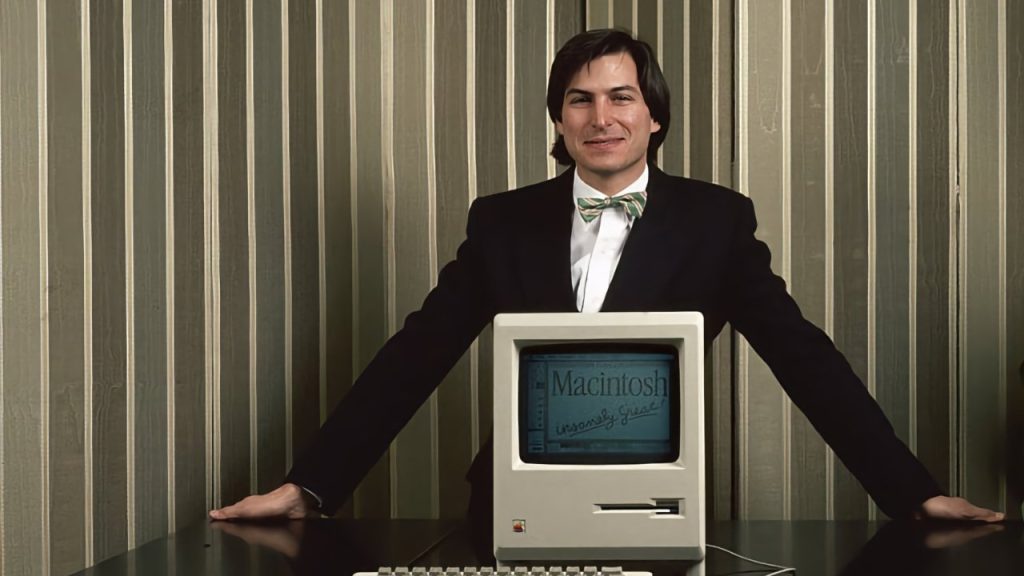If Apple hadn’t been established 49 years earlier, computing may be completely different.

The sizeable company of today’s Apple of 1976 is unintelligible, but important beginning decisions made by Steve Jobs, Steve Wozniak, and others are still in place now. Tim Cook tweeted a look back at his friend and co-founder, co-founder Steve Jobs, in 2021 to commemorate the next 45th celebration of Apple. 13th- Tim Cook, the company’s then wildly successful CEO, started working on how the company’s physical operations, including manufacturing and distribution, were run by the company in 1998. The business was 22 years old when Jobs returned, and the corporation was on a rise. It already had the majority of its growing pains, so it was not yet the formidable firm it would become. Apple’s three-act story, &# 13, is undoubtedly in its third act today. It had its thrilling first work in the 1970s, and it went through a lot of tumult in the 1990s with its next, before becoming the standard American success story. It was accurate to say that you could launch a multi-trillion dollars, global business in your garage. However, it’s not as if starting a business at all had been the right choice. Steve Wozniak and his companion Steve Jobs both had plans to sell the Apple I computer in the middle of the 1970s. Even so, yet the much more economically thinking Steve Jobs did not set out to create a organization. Woz would have given them to anyone who was curious, Jobs did not, and even so, even the much more economically minded Steve Jobs did never set out to make a company. Otherwise, what both of the Steves attempted to do first was pitch their thoughts to the existing companies they both worked for or had previously worked for. For instance, Woz was an engineer at Hewlett-Packard, and he was able to persuade top engineers to study his design in order for HP to buy them. They even recognized that it could be produced profitably, and they passed on it. The concepts that Woz and others had for a Hewlett-Packard system didn’t mesh well with what they perceived as the right match. Steve Jobs ‘ former employer, Atari, felt the same way in 2013. He had tried to entice Atari into purchasing the Apple II, but it was also rejected. Except that Jobs ‘ relationship with venture capitalists began after Al Alcorn of Atari’s Al Alcorn. &# 13, It was with another Atari engineer, Ron Wayne, when they actually founded Apple. He may be renowned for creating the first, incredibly elaborate Apple logo, and he would also be known to leave before the business actually started to grow. He simply left more quickly than you might think. On April 1, 1976, the three gentlemen formally formed Apple, and Ron Wayne resigned shortly thereafter. He had been offered ten percent of Apple, but he instead chose to be purchased out by Steve Jobs for$ 800. &# 13, In 2025, that’s the equivalent of approximately$ 4, 466. That amount may purchase about 20 stocks of Apple. Wayne’s payment would eventually be increased, if, as Mark Markkula, a far more experienced businessman, joined in 1977 as an entrepreneur. Under Markkula, the Apple Corporation formally acquired all three of the original partners for a sum of$ 5, 308, 96 ($ 27, 812.99 in 2025 ). Wayne received a third of that despite having previously left for legitimate reasons. &# 13, Apple’s unique owners. Given Apple’s phenomenal success, it’s difficult not to then discover his departure as a mistake. However, at the time, he was being paid fairly and was leaving a company that had a much off-balanced potential. Ron Wayne claimed in 2013 that he had no worries at all, among the numerous times he’s been asked about his exit. The creation of Apple was certainly a turning point in history, although at the time of training, nothing ever knows this. &# 13, Apple’s first successAfter he left but before Markkula turned it into a man business, it did have one that will sound familiar if you follow how the organization works today. Apple sold all 50 of its Apple-I computers one moment before having to pay its suppliers. It made 50 without any money either. &# 13; Apple still has a very well-managed supply chain today, but as of 1976, it was actually beginning to learn about finance. Steve Jobs first learned about the 30-day deadline, which stipulated that you could give your vendors for that much. He did it because he had to, so he learned it later. In 2013, Jobs had pitched the Apple-I to Paul Terrell, who was in charge of the then-successful Byte Shop. Terrell requested assembled servers, so he purchased them while Jobs wanted to sell the motherboard and products so aficionados could build their own servers. &# 13;If Apple had studied finance and supply chains back then, it had studied business when ex-Intel Markkula arrived. However, he also changed the business, which is still present in Apple tenets later. He outlined the company’s philosophy in &# 13. If you’ve ever worked for a corporation, you’re likely to have a healthily skeptical attitude toward them. This is probably part of Business 101 at Harvard. The philosophy Markkula wrote in Apple’s case was remarkably clear, and the business has adhered to it consistently. &# 13, This was Apple in 1977- and it’s still Apple today. Steve Jobs later explained to his biographer Walter Isaacson that Markkula’s point was that making money shouldn’t be the main focus. If money is your first thought, the business will struggle, despite the fact that you need to and you even more obviously want to. The money will follow if you create” something you believe in” and also put your focus on “making a company that will last” Because it is incredibly and consciously simple, Markkula’s” The Apple Marketing Philosophy” is so clearly an idea for Apple. The one-page document, which was written on January 3, 1977, only contains two brief instructions about understanding customer needs and concentrating on a few specific products rather than spreading itself too thinly. Then it concludes with a paragraph about introducing Apple to its customers. People DO judge a book by its cover, and# 13 If we present the best product, the highest quality, the most useful software, etc. in a shoddy manner, they will be perceived as slipshod, and if we do so in a creative, professional way, we will impart the desired attributes. Apple continues to be renowned for its flawless packaging and presentation of its products. That is still a component of what makes Apple, or Apple, today. And it was written into the business from the beginning. By the time Steve Jobs ‘ life was over, it was just a paragraph on a mission statement. By the time that he died, it was an entire “packaging room” where boxes were created and tested. &# 13, In recent years, that attention to packaging is arguably even stronger and more pronounced outside the business. For example, Apple packaging was the only subject of an exclusive photography and art collection in 2021. In addition to all of its environmental efforts, the company also announced in 2023 that it was working to remove all plastic packaging. It’s a very different company as it enters its 50th year, according to &# 13. However, Apple is still based in the 1976-founded company.
 Stories of the Shire: A The Lord of The Rings Game – group tower and shared meals play information
Stories of the Shire: A The Lord of The Rings Game – group tower and shared meals play information  Pac-Man-inspired activity platformer Shadow Labyrinth launches July 18 on PS5
Pac-Man-inspired activity platformer Shadow Labyrinth launches July 18 on PS5  Masters of Light: Hand Tracking upgrade available today on PS VR2
Masters of Light: Hand Tracking upgrade available today on PS VR2  Baby Steps: hands-on record
Baby Steps: hands-on record  Discuss of the Week: Assassin’s Creed Shadows – Landscapes
Discuss of the Week: Assassin’s Creed Shadows – Landscapes  Free VPN software with connections to China martial were hosted in Apple’s App Store.
Free VPN software with connections to China martial were hosted in Apple’s App Store.